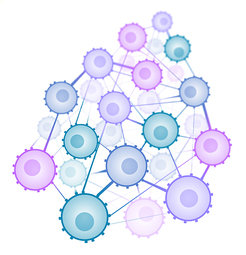
Lademann CA, Renkawitz J, Pfander B, Jentsch S.
Cell Rep, 2017, 19, 1294-1303.
The INO80 Complex Removes H2A.Z to Promote Presynaptic Filament Formation during Homologous Recombination.
The INO80 complex (INO80-C) is an evolutionarily conserved nucleosome remodeler that acts in transcription, replication, and genome stability. It is required for resistance against genotoxic agents and is involved in the repair of DNA double-strand breaks (DSBs) by homologous recombination (HR). However, the causes of the HR defect in INO80-C mutant cells are controversial. Here, we unite previous findings using a system to study HR with high spatial resolution in budding yeast. We find that INO80-C has at least two distinct functions during HR-DNA end resection and presynaptic filament formation. Importantly, the second function is linked to the histone variant H2A.Z. In the absence of H2A.Z, presynaptic filament formation and HR are restored in INO80-C-deficient mutants, suggesting that presynaptic filament formation is the crucial INO80-C function during HR.





